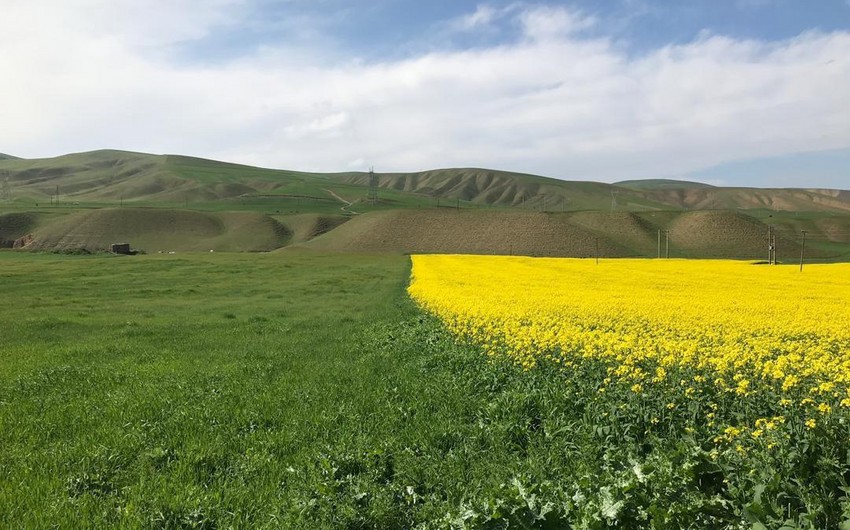According to official data, there are 155 different mineral deposits in the Armenian-occupied territory of Azerbaijan. Of these deposits, including five gold, six mercury, and two copper deposits, 12 are classified as rich ore deposits. As it is known, during the occupation, the Armenians plundered these fields and exported their wealth, adding a lot of money to their budgets. Dozens of companies involved in developing these fields, such as Sterlite Gold Ltd, Sirkap Armenian, Base Metals, Manex and Valex, and the Armenian Copper Program, have been relocated by the foreign Armenian diaspora or run by foreign Armenians.
The Soyudlu (Zod) gold deposit in the Kalbajar region, located on the border with Armenia and currently closed, had been exploited since 1976 and produced more than 27 tons of gold before Armenia occupied it. In the following period, the Armenians used both the Soyudlu field, whose industrial reserves were estimated at 112.5 tons and the Agduzdag and Tutkhun areas, whose resources are believed to exceed 13 tons. Since 2007, the Soyudlu (Zod) field has been managed by the GeoProMining Gold Company (GPM).
According to its website, the company is an international diversified metal mining holding with three assets in Armenia and Russia. Thus, its assets in Armenia are the GPM Gold production plant in the village of Sotk (Zod) and the Agarak copper-molybdenum plant. In 2018, 130,000 ounces of gold were reportedly extracted from the Zod mine. It is estimated that the field will be depleted in 18 years. The Canadian company First Dynasty Mines (FDM), which exploited the Soyudlu field before GPM, became the company's sole owner in 1998 as a 50% shareholder in the Armenian state-owned Ararat Gold Recovery Company (AGRC).
In 2007, GPM Director-General Vladimir Kozlov said they would invest about $100 million in the Armenian economy. On the other hand, on August 21, 1997, the Azerbaijani government signed a gold mining agreement with RV Investment Group Services LLS (51% Azerbaijani, 49% US capital) covering the Soyudlu, Gizilbulag, and Vejnali fields in the occupied Zangilan and Kalbajar regions. Since then, RV Investment had repeatedly warned GPM Gold that its production activities in the area would create international legal liability, and through lawyers, had appealed to the Armenian government, the United States, Canada, the United Kingdom, and the United Nations to suspend production in the occupied field. All these appeals remained unanswered. From September 27 this year, according to the head of GPM Ruzan Grigoryan, work on both the field and the plant was suspended "until the threat of fire in the area subsides." However, it seems that these territories will soon return to Azerbaijan's control, like the other occupied areas. Therefore, it is doubtful that GPM will be able to exploit Soyudlu again.
According to some data, the Gizilbulag field near the occupied Aghdara has 13.6 tons of gold and 47.9 million tons of copper, the Mehmana field has 37.3 million tons of lead and 40.4 million tons of zinc, the industrial reserves of the Demirli field are 100 million tons of copper, and the industrial resources of the Canyatag-Gulyatag are 5 tons of gold. There is also information about the Agyatag, Lovchay, Chorbulag mercury deposits with total reserves of 850 tons, the Qamishli, and Aghgaya deposits with 200 tons, and the Kilseli tuff deposit with 10,941 cubic meters.
Until now, the Armenian side has been looting all these fields with great confidence, ignoring Azerbaijan's warnings that their steps are illegal. Now the companies operating these fields are in a desperate situation, facing huge losses. Moreover, the Azerbaijani government has every reason to sue them in international courts and demand compensation for economic and environmental damage. The countries authorities have relevant materials on these fields' conditions both before and after the occupation and the work carried out there. Since the income from the development of these areas goes into the pockets of Armenia's ruling elite, of course, they will have to pay compensation.
At the same time, this issue should be a lesson for those who violate business ethics rules and participate in the looting of natural resources in the occupied territories.
Gulu Nuriyev, expert


 https://static.report.az/photo/d3529f5e-3424-35d5-9b77-96eed3d91ce7.jpg
https://static.report.az/photo/d3529f5e-3424-35d5-9b77-96eed3d91ce7.jpg

